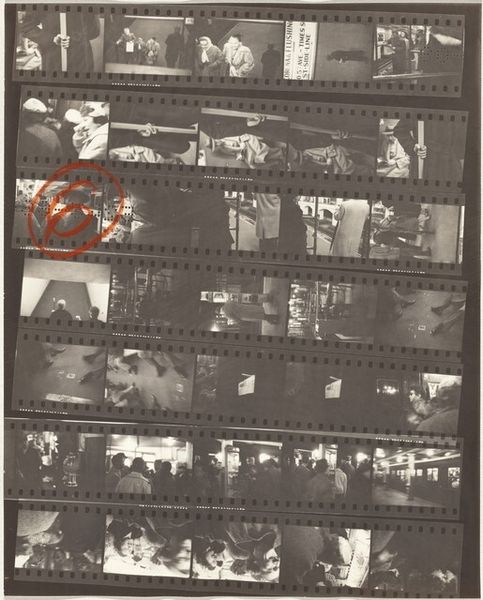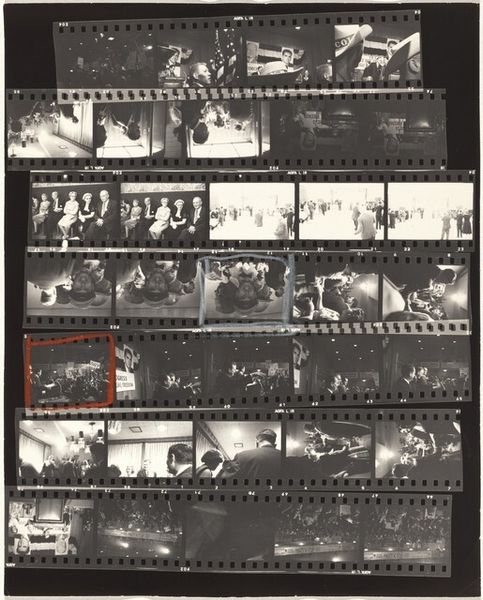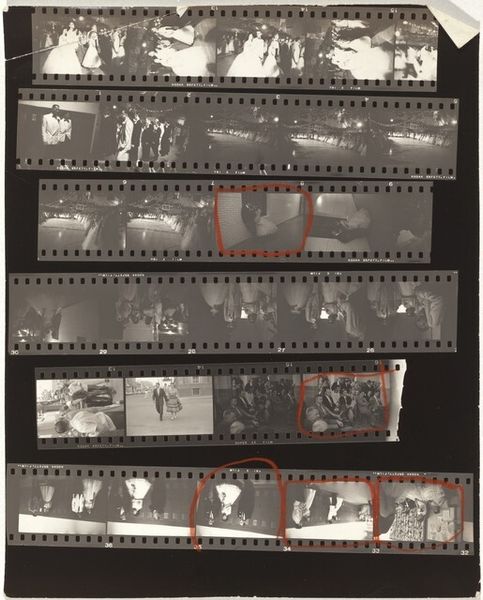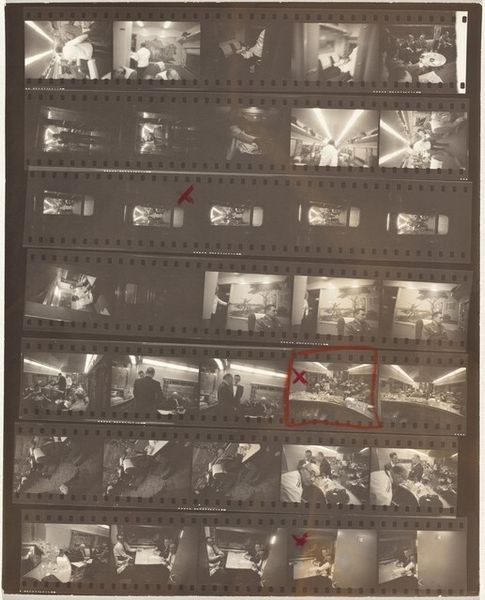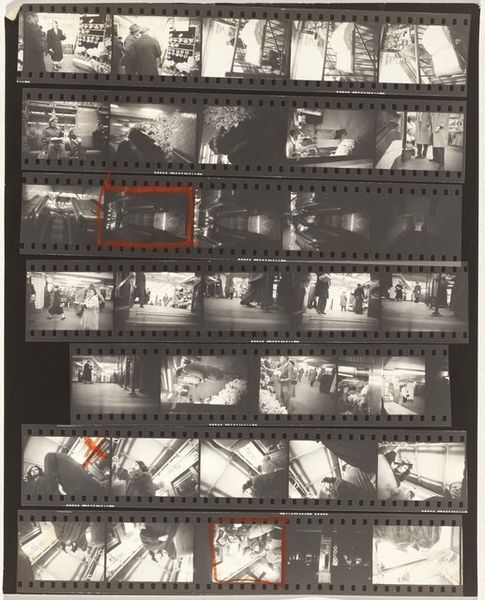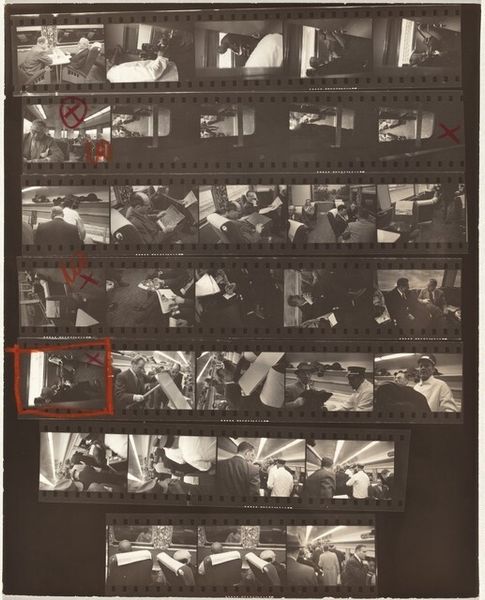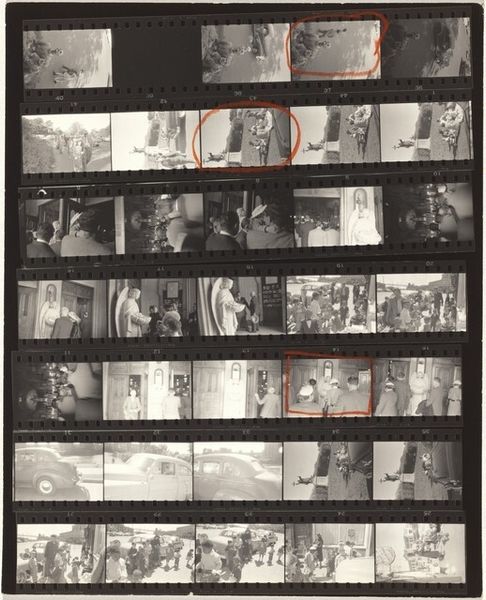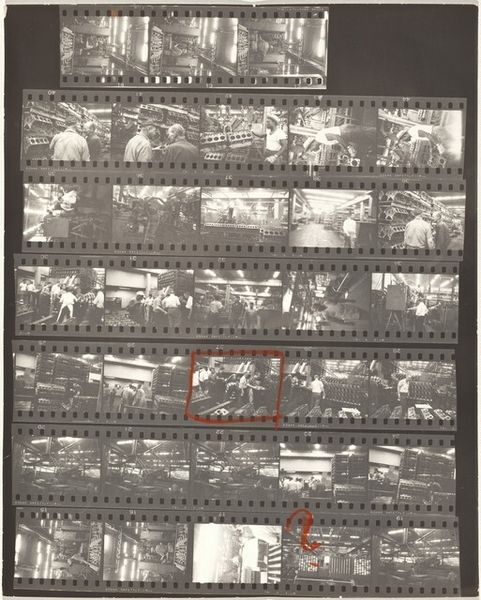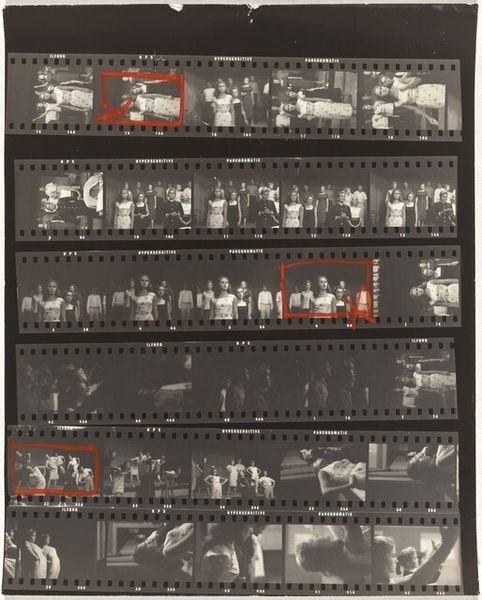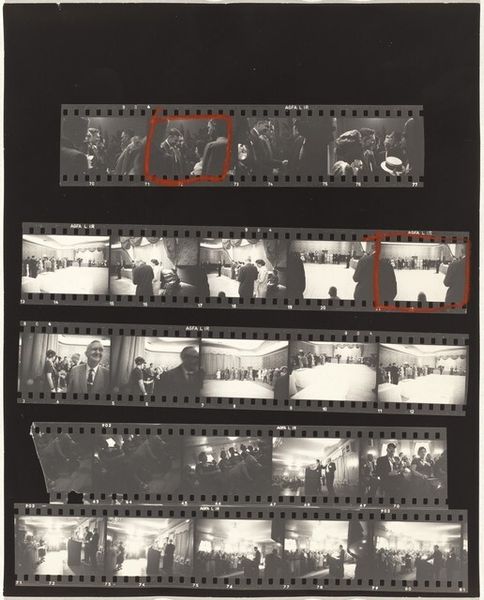
#
architectural sketch
#
architectural and planning render
#
architectural modelling rendering
#
architectural diagram
#
architectural plan
#
autocad drawing
#
architectural section drawing
#
architectural drawing
#
architecture drawing
#
architectural proposal
Dimensions: sheet: 25.2 x 20.3 cm (9 15/16 x 8 in.)
Copyright: National Gallery of Art: CC0 1.0
Curator: This is Robert Frank's "Subway no number" from 1955, a fascinating piece constructed from strips of photographic film. What's your first take on it? Editor: Well, it feels very raw, almost like a document. The materiality of the film strips themselves – the sprocket holes, the varying exposures – adds another layer. It’s not just about the image; it’s about the process. What stands out to you? Curator: Precisely! The labor involved in creating this contact sheet. Each frame is a potential photograph from his series "The Americans." Frank isn’t presenting us with the polished end result, but exposing the means of production itself. Consider the social context. Editor: How so? Curator: Well, the act of physically assembling these strips suggests a deliberate act of selection and arrangement that alludes to a pre-digital workflow which relied on the physical. He allows us to consider the entire context surrounding the moments captured: the contact prints, the red-pencil crop marks, and even the cross marking out a whole row of potential pictures. Do you notice a narrative he is establishing? Editor: I guess I hadn't really thought of that, but you are absolutely right. I guess the act of creating art is sometimes a bit raw, like a production line. It really pushes boundaries of art production by emphasizing not only images that end up being works of art, but rather what leads up to the product that you would purchase. Curator: Yes, that's what strikes me the most about his creative expression here. What are your thoughts about Robert Franks choice in film photography for this specific project and era? Editor: The granularity of the photograph strips make for a distinct aesthetic experience but ultimately is an economical way to achieve photography. This adds some class commentary considering Frank focused the American underbelly, adding to this "documentary" affect. It's such a great idea to challenge traditional ideas of artistry. I'm leaving with a much broader sense of his social commentary through material analysis of production.
Comments
No comments
Be the first to comment and join the conversation on the ultimate creative platform.

